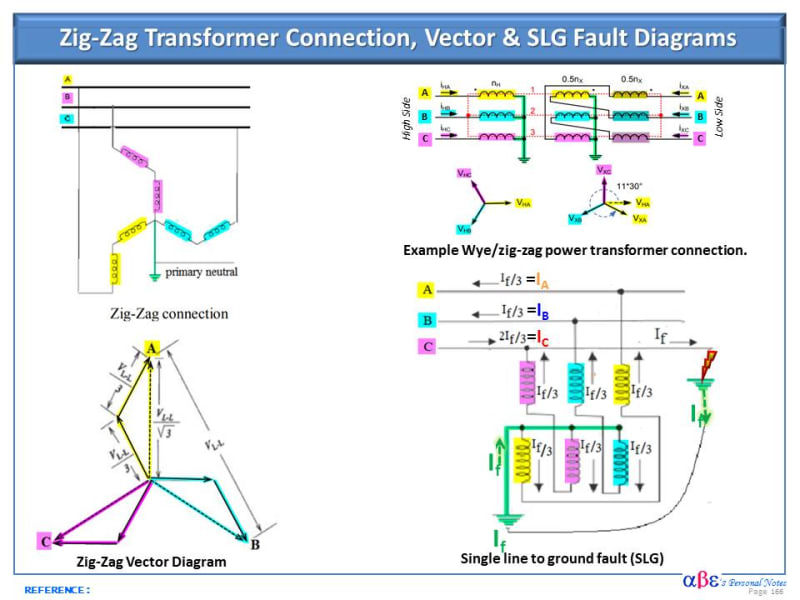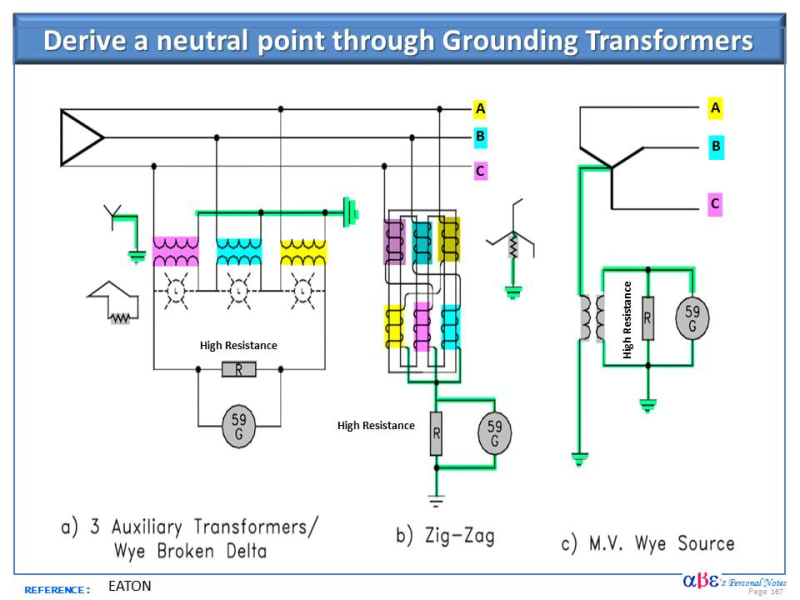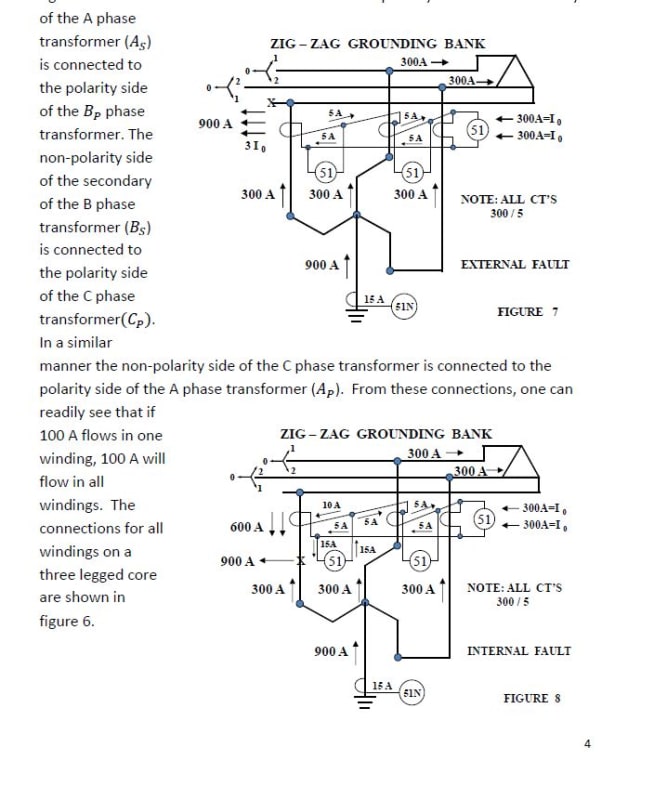CuriousElectron
Electrical
- Jun 24, 2017
- 189
Hi Guys,
I just wanted to discuss theoretics of what happens to a medium voltage system that has one phase inedvertently grounded. Say the phase A is grounded. LL 'A-B' and LL 'A-C' voltages would elevate to 173% of nominal.The insulation level of the cable should have been rated for this scenario already. The equipment downstream of and upstream of the faulted node is now subjected to high overvoltage condition and needs protection to "kick in" and trip and isolate the ground fault. Am I correct in my assestment?
Now, if the MV feeder had a sigzag transformer to function as a ground return path of the system, the system would not be subjected to the overvoltage, which would be preffered over the ungrounded delta system. Lower level insulated cable can be used, smaller conduit, etc.It seems to me that the zigzag transformer is equivalent in theory to the HRG system in low voltage system.
Please poke holes in my write-up.
Regards,
EE
I just wanted to discuss theoretics of what happens to a medium voltage system that has one phase inedvertently grounded. Say the phase A is grounded. LL 'A-B' and LL 'A-C' voltages would elevate to 173% of nominal.The insulation level of the cable should have been rated for this scenario already. The equipment downstream of and upstream of the faulted node is now subjected to high overvoltage condition and needs protection to "kick in" and trip and isolate the ground fault. Am I correct in my assestment?
Now, if the MV feeder had a sigzag transformer to function as a ground return path of the system, the system would not be subjected to the overvoltage, which would be preffered over the ungrounded delta system. Lower level insulated cable can be used, smaller conduit, etc.It seems to me that the zigzag transformer is equivalent in theory to the HRG system in low voltage system.
Please poke holes in my write-up.
Regards,
EE



